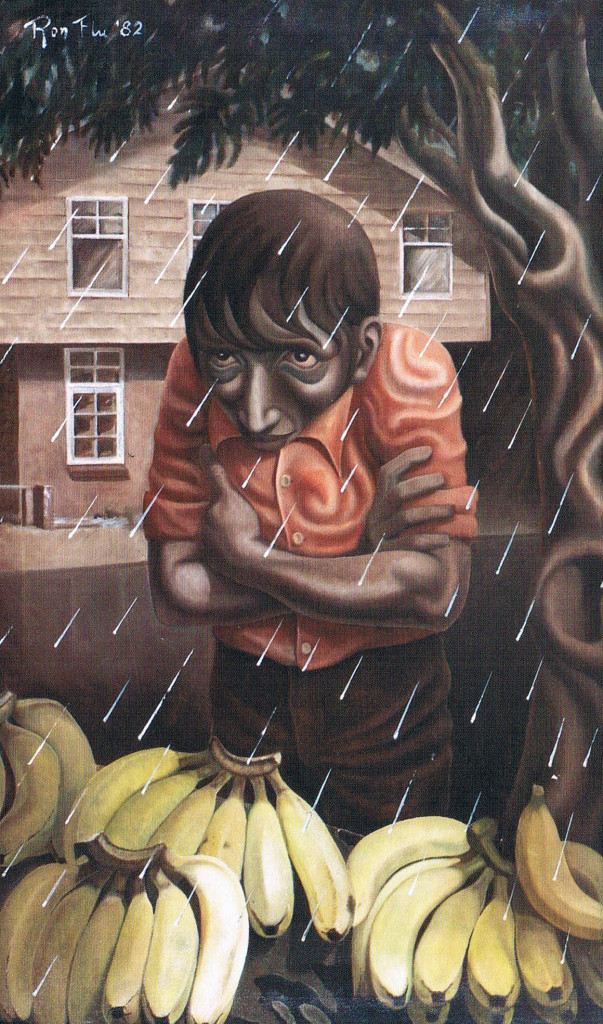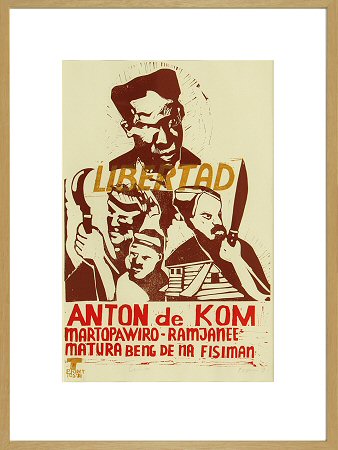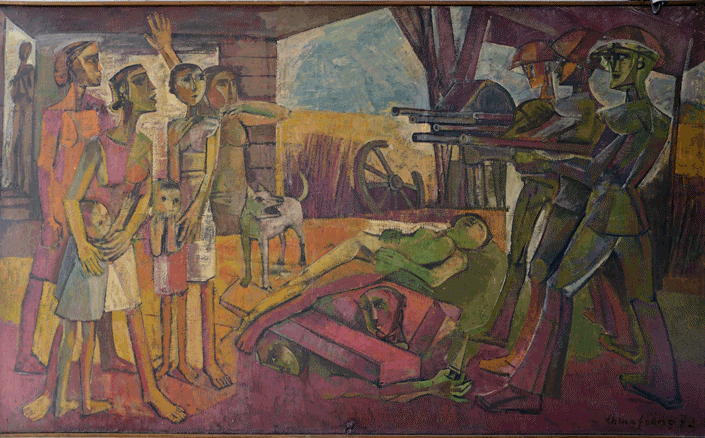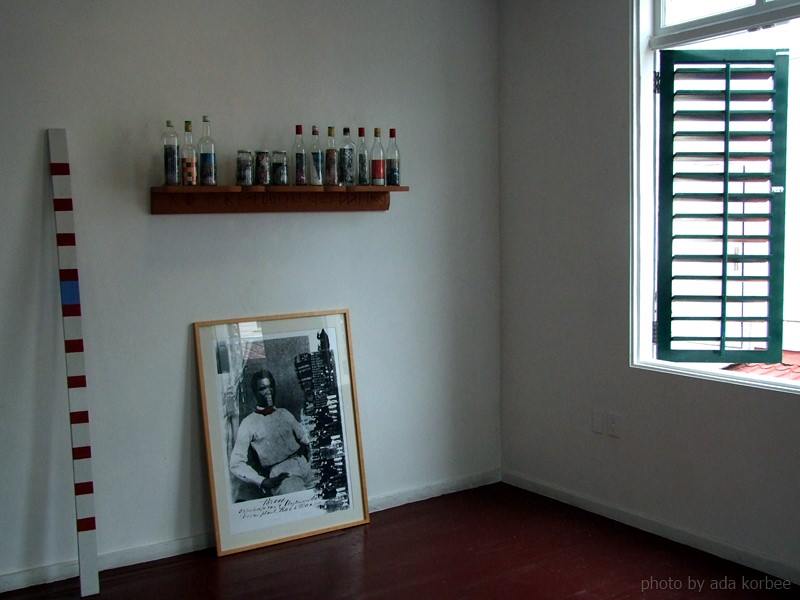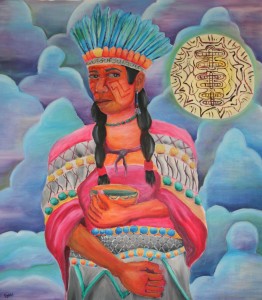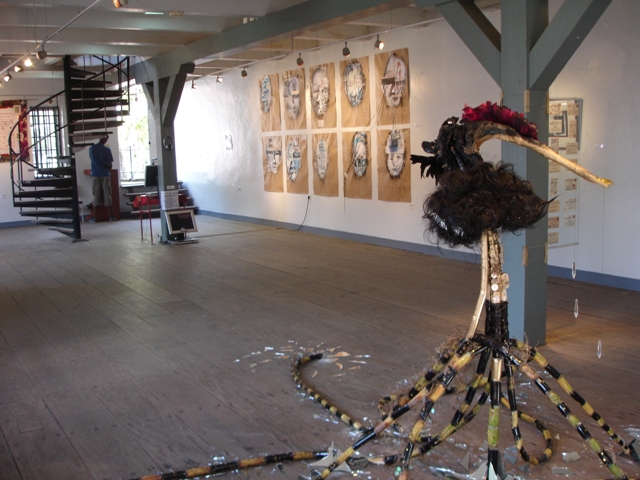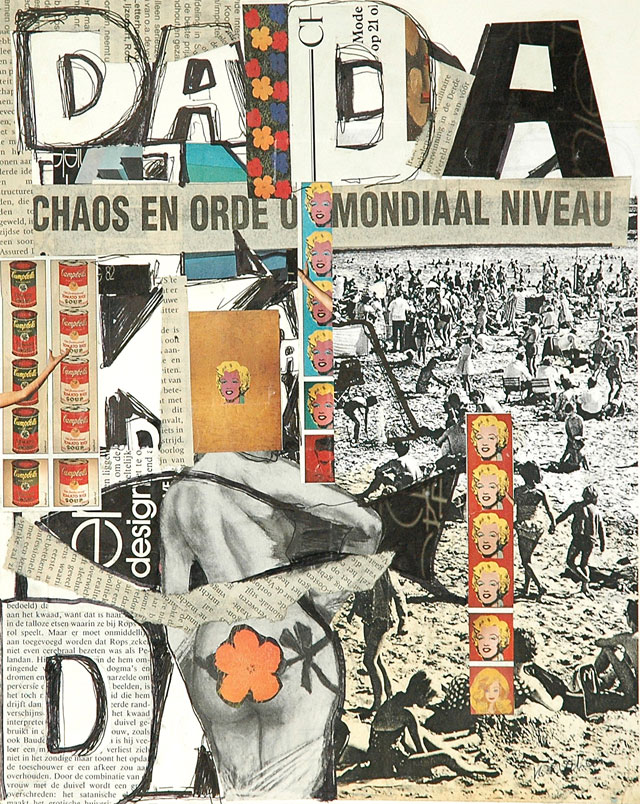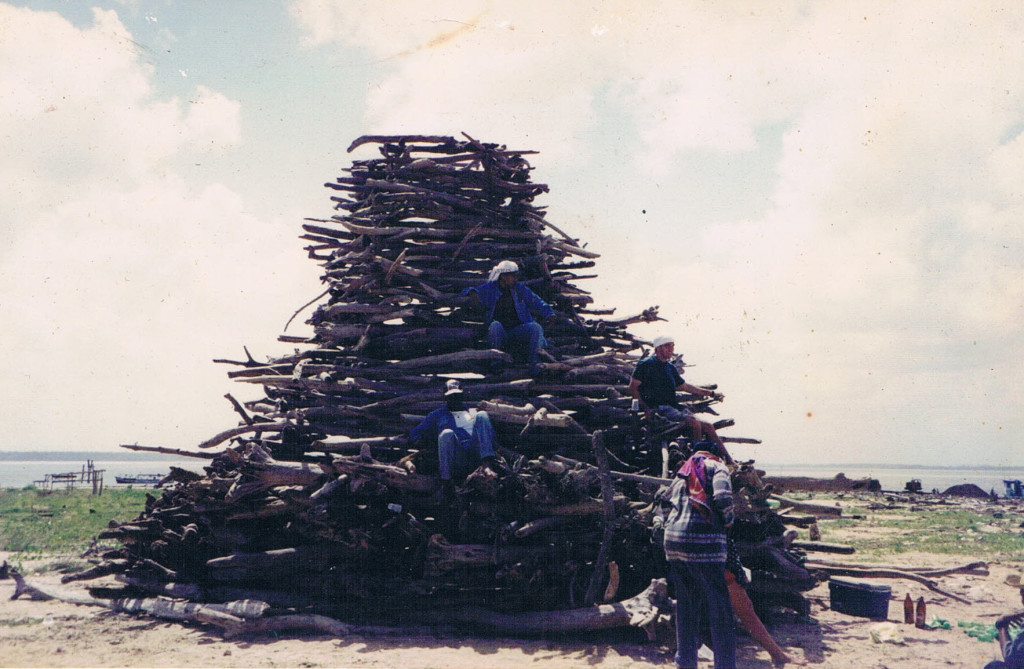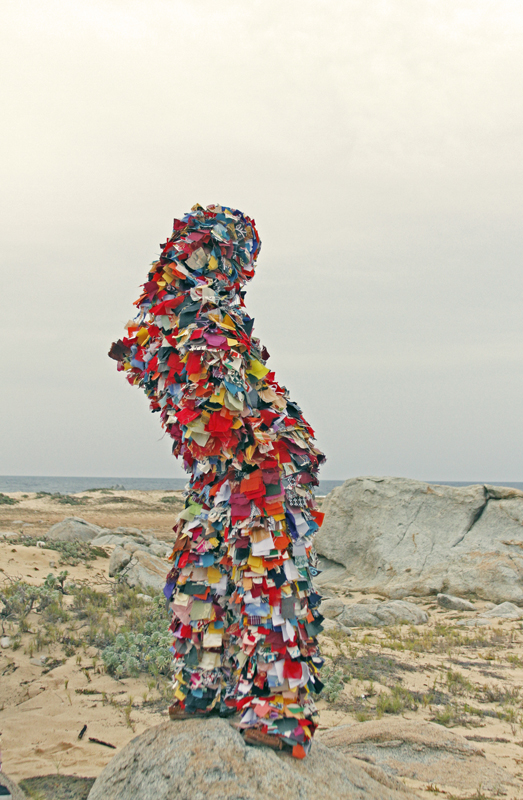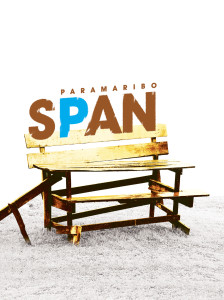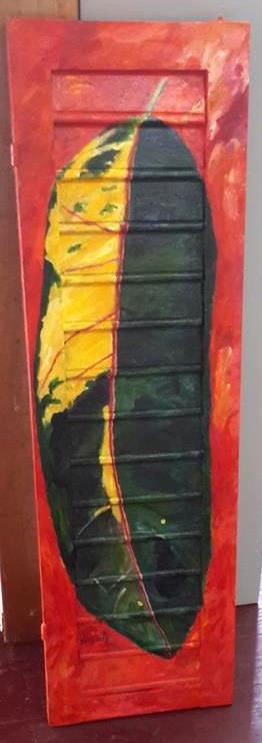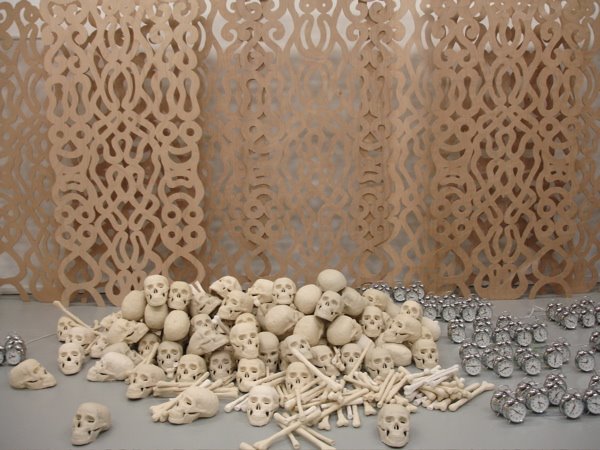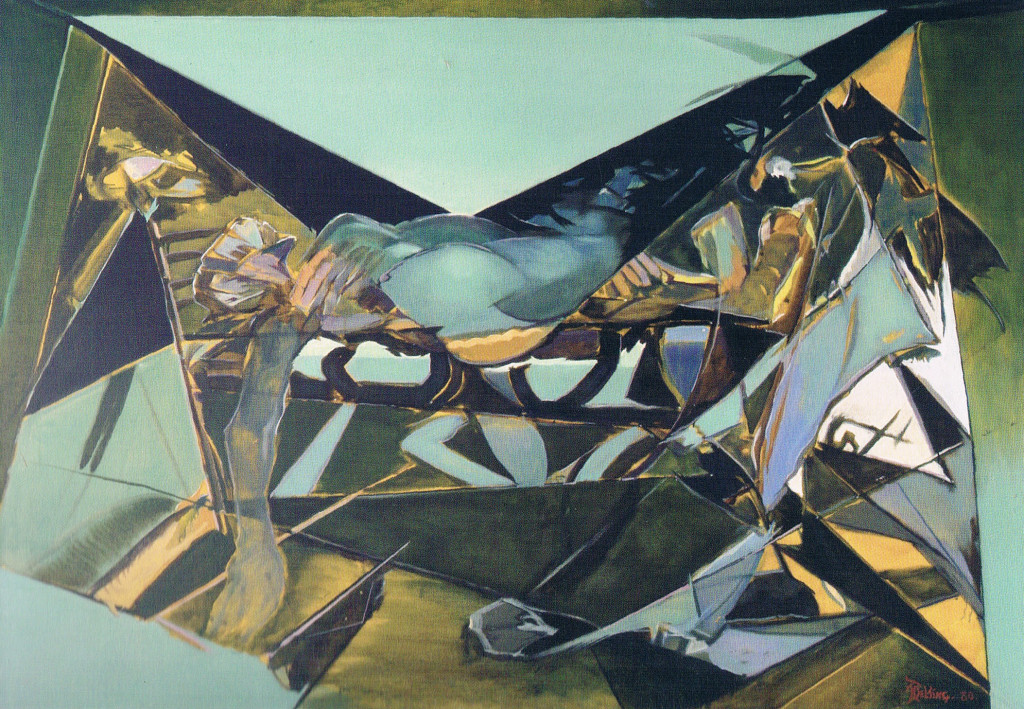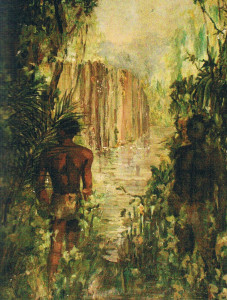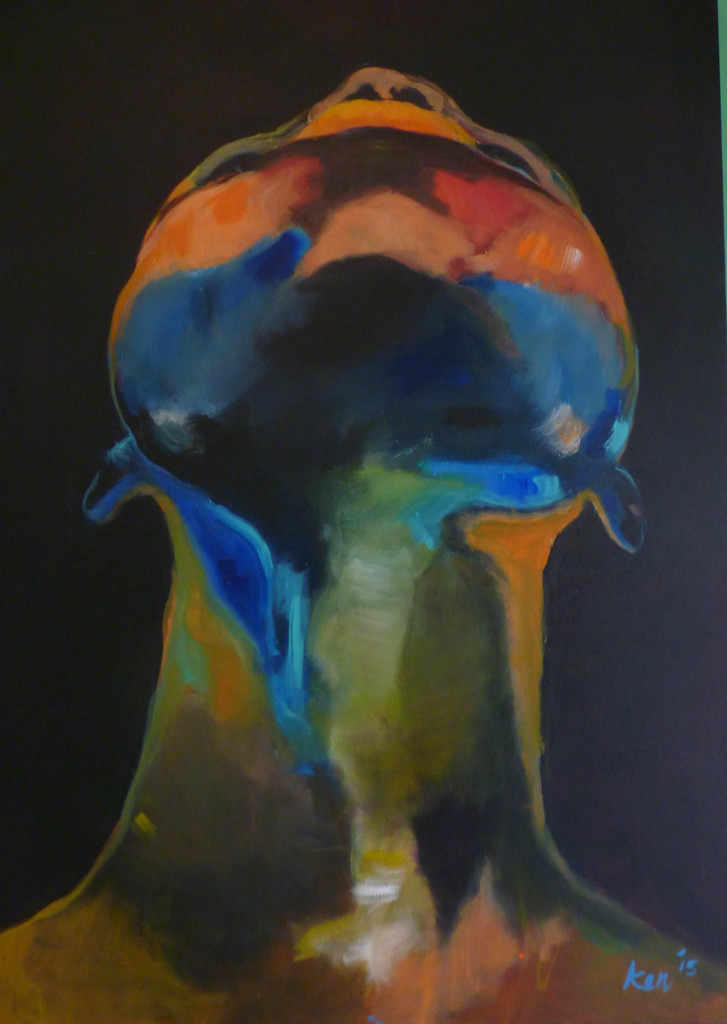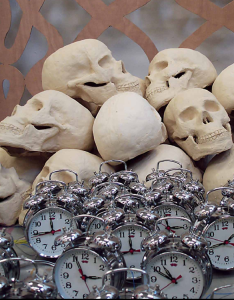
It is clear that many people in Suriname not yet fully realize that artists can only arrive at great results by stepping out of comfort zones. By venturing into the unknown. We should be proud of what these free spirits offer us, and we truly believe that societies can greatly benefit from their artistic gifts.
Therefore we think that releasing their inner rebel might be sound advice for art lovers too!
Chandra van Binnendijk and Marieke Visser on art in Suriname.
First published: July 7, 2016
Looking for rebels in the visual art of Suriname
*
Suriname has no artistic climate in which stimulating debates take place. But does this also mean that the visual arts in this Caribbean country radiate only lethargy? Not in the least! Yes, Suriname lacks lively panel discussions with dynamic and in-depth exchanges of views on the position and the role of visual art in our modern society. And no, there is no forum for artists where they can ventilate critical reflections on their own work or on the work of others. But most certainly art is created here which not always easily fits the conventional models of what contemporary art should be. It is created by artists who can be troublemakers and who are often jamming what is considered permissible by the establishment.
From a superficial point of view, there has indeed been hardly any art with strong views or artwork commenting on what is happening in society. But the one who dives in with his focus on searching for critical features will encounter many surprising artistic expressions. A wide range of wayward rebels appears, each of them contributing in their own way to the versatile color palette that is the Surinamese art history.
For this article we looked at artists who went beyond the beaten paths. Those who are discussed herein are not the only ones who fall into this category. We made a selection especially looking for the ones who have contributed to artistic self-awareness through their authentic expressions and who have by doing so contributed to shaping an identity which did not exist before.
A tribute to the rebels.
Critical views on society
Not many an artist will really boast about being detached from society, and will stress he finds it necessary to be connected and involved with what goes on in their country. But to what extent do they really speak out in their work?
A number of them do so and quite strongly for that matter.
The notable grey eminence among them is Ron Flu (Singapore, 1934). His work is sharp and intense, depicting a highly critical view on society in powerful dark paintings with angular, almost cubist-scale human figures. His topics: nitwits in positions of power, scandalmongers, gamblers and prostitutes, and poverty portrayed in a rain-soaked banana vendor. This is how Flu shows us his compelling indictment of abuses.
Ron Flu, ‘Banana vendor’, oil on linen, 100x60cm, 1982 Collection De Surinaamsche Bank / PHOTO From Zichtbaar, uit de kunstcollectie van De Surinaamsche Bank
Critical as well, but from a different view point, is the work of René Tosari (Meerzorg, 1948). Tosari was an outstanding example of great social involvement in his earlier years when he specialized in graphic techniques. His work in this time was populated with images of militant workers and motivated farmers, radiating the message of national production and education for all. He selected graphics not just as a suitable way for his artistic expression – this stemmed from his conscious choice to make art works affordable for the common people. His style of social realism reminds us of the decade of the anti-Vietnam protests and the Black Power movement. Tosari’s message content of liberation and anti-colonialism connected seamlessly to this international wave.
René Tosari, poster / PHOTO Courtesy artist
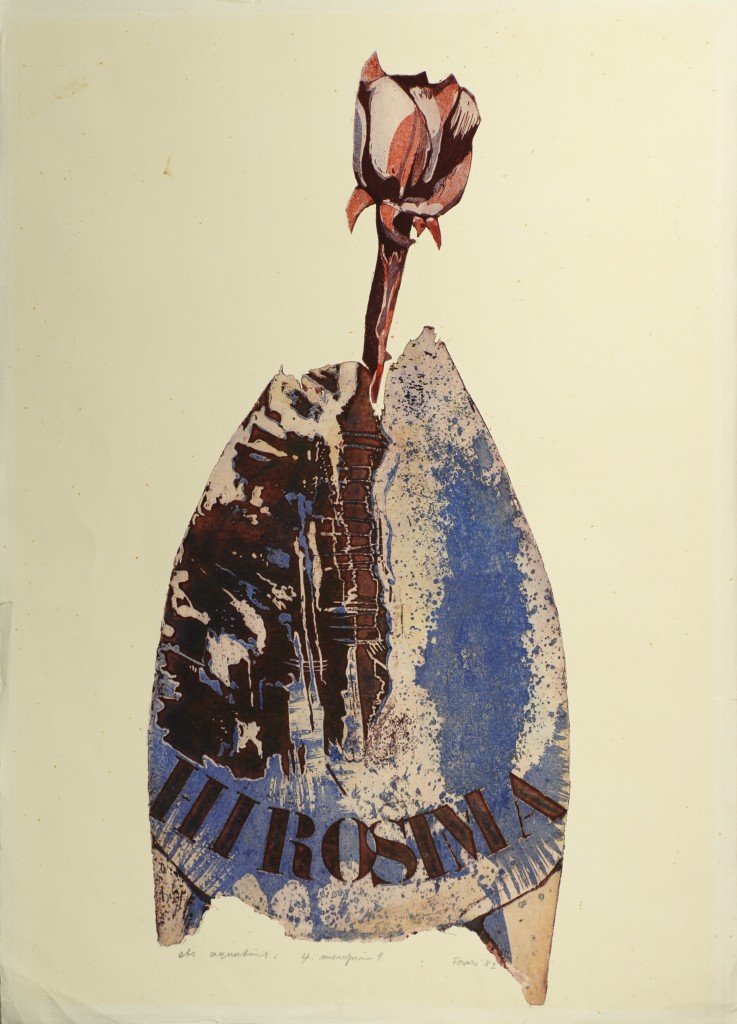
René Tosari, etch/aquatint, 1982 / PHOTO Courtesy artist
Both Flu and Tosari became milder in their later years and now select softer and more personal topics for their paintings, often inspired by nature.
We wonder if this also would have been the case with Jules Chin A Foeng (Paramaribo, 1944-1983), a rebel par excellence. This fierce activist and nationalist was only 39 years when he died, but he left an impressive oeuvre of hundreds of paintings, drawings, and graphic work. He was the one who introduced photorealism as a genre in the arts, in the period when modern art got its own special character. He was a passionately driven artist and an inspiration to many art students and young colleagues. Chin A Foeng is also remembered for his strong advocacy that Suriname had to rely on its own strength and was the founder of several art academies in the country.
Jules Chin A Foeng, title unknown, 1972 / PHOTO Roy Tjin, for TOR; A People’s Business
Self-consciousness
Both the Indigenous culture and the Maroon culture have inspired artists to venture outside what are considered criteria for what art is, and what is not.
Marcel Pinas (Marowijne, 1971) has tapped into an inexhaustible theme, the wealth of the African based Maroon culture of his roots. Pinas is especially known for his mixed media work and his (sometimes huge) installations in which he utilizes traditional symbols and objects such as the faakatiki (poles, wrapped with fabric), engraved spoons, oil lamps, bottles and calabashes, and the colorful checkered pangi cloth which is characteristic of Maroon attire. His mission is to preserve the cultural heritage of the Surinamese Maroon society, and this forms his source of inspiration for all the art work he creates. His strong drive and his unprecedented personal approach have drawn international attention and appreciation.
Marcel Pinas, installation view at Kibii Wi Koni Marcel Pinas The Event / PHOTO Marieke Visser, 2011.
Just like Marcel Pinas, Remy Jungerman (Moengo, 1959) works mainly from his Afro-Surinamese roots. But while Pinas’ scope is broad and comprises a wide range of cultural elements, Jungerman is focused on investigating Winti, the Afro-American religion that is professed by black Surinamese and could be viewed in the same range as Voudoo, Candomblé and Santería. Jungerman assimilates symbols, utensils, and rituals in his intriguing installations, using collages and sculptures and placing them in different contexts, thereby emphasizing their spiritual power.
Remy Jungerman, work in Readytex Art Gallery / PHOTO Ada Korbee
Remy Jugerman, ‘Peepina’, 2011.
Winston van der Bok (Calbo, 1947) has been using his Amerindian roots as main source of inspiration for his work for a long time now. He has not only incorporated indigenous motifs in his art, but has also transformed them and thus given them added significance. Van der Bok is Kaliñha, a member of the Indigenous community which is also known as Carib. In his early forties he suddenly decided to make art about his own heritage. “I don’t know my own language, but I am what I am: Kaliñha. I know what I want, and through image carriers I am able to attach my own roots-message to my work.” Clearly identifiable in his work are all the Indigenous motifs: the patterns of the traditional basketry, maluana-symbols and also the images of the astronomic constellations which his ancestors made for anthropologists.

Winston van der Bok, ‘Transformation’ / PHOTO Courtesy Sranan Art Xposed
Another artist who explored Indigenous culture in his work – although in a much broader, more Caribbean way –was Ro Heilbron (Paramaribo, 1938-2014). During his last exhibition, just after his passing, his widow also exposed his urn, colorfully decorated in his unique style by his grand children. A very fitting gesture for an artist who loved to go off the ‘main road’.
In an interview with Marvin Hokstam for www.devsur.com Ro Heilbron said: “The paintings I make today are figuratively realistic; I have done the landscapes and the angry rebellious stuff already. These days I operate on a much broader platform. I want to know more about our ancestors and what drives me now is that indescribable urge to tell that story.”
Ro Heilbron, ‘Totempole II’, acrylic on canvas, 50x50cm / PHOTO Courtesy Sranan Art Xposed, 2014
Recently a young artist Sylvio Alatoe (Galibi, 1985), also Kaliñha, like Van der Bok, is inspired by his heritage too. He paints the history of the Amerindian people of Suriname and their culture as he sees it. He wants his work to tell his story, the Kaliñha side of the story. He depicts scenes from history but also uses objects or symbols from his culture. Marcel Pinas is a big example for Alatoe. “Marcel utilizes his culture; he doesn’t allow his culture to disappear. He doesn’t write it down; he displays it. I find that fantastic.”
Following Kaliñha tradition, ‘writing’ and decorating are only done by women. Alatoe ‘breaks’ this rule when he uses certain objects in his paintings. For example: the painted sun in the painting below is a ‘maluana’, called a ‘tumero’ in Kaliñha. By doing this the artist expresses his appreciation for women.
Sylvio Alatoe, ‘Untitled’, from the series ‘My Red Culture’, 2014 / PHOTO Courtesy Sranan Art Xposed, 2014
Wakaman, drawing lines – connecting dots
The exhibition Wakaman drawing lines – connecting dots was held in Fort Zeelandia, Paramaribo, in 2009. The venue, the themes of the art work, the whole process of ‘the making of’ Wakaman; everything was done with a new, fresh approach. Remy Jungerman and Gillion Grantsaan paired six Surinamese artists; three living in Suriname were each connected to one of the three living abroad. Kurt Nahar & Iris Kensmil, Marcel Pinas & Charl Landvreugd and Ori Plet & Patricia Kaersenhout. The themes they explored ranged from human rights to deep concern for environmental and loss of traditional knowledge and to the invisibility of Surinamese men (especially fathers).
Work of Iris Kensmil from the Wakaman-exhibition / PHOTOS Courtesy Wakaman/Remy Jungerman
Installation view Wakaman exhibition. Foreground work of Charl Landvreugd, in the back Patricia Kaarsenhout. PHOTO Esther Schreuder.
Kurt Nahar, ‘Untitled 2369’, 2008.
Passion for the environment
In December 1998 a group of Surinamese artists, most of them students or teachers at the Nola Hatterman Institute (now Nola Hatterman Art Academy) traveled to Braamspunt, a muddy shore north of Paramaribo, part of the Wild Coast. Two Dutch artists who had taught art classes at the NHI accompanied this group to make art from the driftwood that washes up on the Atlantic shore. A project which let the participants create art without many boundaries, a way of working that was very new for most of them. Very soon they were not only building a giant construction with the driftwood but also talking about the hundreds of plastic bottles that polluted the shoreline. Somehow a spark of passion was ignited, and most of the artists agreed that they wanted to do something with their art to raise awareness, to sound an alarm about pollution. The experience had caused a shift in how they looked at their own art work, and about their perception of what a visual artist can do. That art is not necessarily about beauty, that there are more criteria than just technique or aesthetics.
The end result of the Braamspunt-project. Not yet visible is a large ring around the structure of plastic bottles that was the finishing touch / PHOTO Courtesy Sranan Art Xposed
Pollution proved to be a source of inspiration for other artists as well. Dhiradj Ramsamoedj (Paramaribo, 1986) made an impressive installation made of plastic bottles, floating in the Suriname River, for the first (and only) Paramaribo Biennale in 2007.
Dhiradj Ramsamoedj, installation, 2007 / PHOTO From the book Konmakandra
Dhiradj Ramsamoedj, ‘Flexible Man’, 2012/ PHOTO Courtesy artist
The Paramaribo Biennale was a result of the collaboration between the Nola Hatterman Art Academy in Suriname and the Gerrit Rietveld Academy in the Netherlands. This alliance proved to be a stimulus for many young artists to take more risks and get off the beaten track. Five people got the opportunity to study at the Rietveld Academy in Amsterdam: Razia Barsatie, Ruben Cabenda, Annemarie Daniël, Neil Fortune and Trimo Kromotaroeno. And many Rietveld-teachers came to Suriname and influenced their students in Paramaribo.
Another environmentally aware artist is Roberto Tjon A Meeuw (Paramaribo, 1969), who brought his recycle art to a new level during Paramaribo SPAN, a group exhibition in 2010, with his fatu bangis, his “chill-benches”, made of ‘scrap’.
The logo for the exhibition Paramaribo SPAN in 2010, in Paramaribo, included a fatu bangi
During the exhibition ‘Paramaribo Perspectives’, in Rotterdam, the Netherlands, in 2010, Tjon A Meeuw’s fatu bangi’s were shown (and used) too, 2010
Kenneth Flijders (Paramaribo, 1956) has a very soft-spoken way in which he contributes to the environment. He tries to salvage old building materials like windowpanes and doors and uses these to paint on. This works both ways: he recycles and he conserves. The images he paints are a way of documenting the past too, sometimes a historic landscape, sometimes an almost forgotten garden plant. And if he thinks a plant is becoming rare, he even propagates it.
Kenneth Flijders, ‘Untitled, acrylic on wooden window pane, 2015 / PHOTO Marieke Visser, 2015
Again, also in the area of environmental awareness Marcel Pinas has proven not to be afraid of making a bold statement. In 2011 he had the largest solo-exhibition ever held in Suriname, at the premises of the Chamber of Commerce & Industry, a venue that had seemed highly unfit but which Pinas proved to be perfect. Large installations were shown during Kibii Wi Koni Marcel Pinas The Event. One of them was ‘A libi’.
The mercury pollution that goes hand in hand with the destructive search for gold threatens the life of the people in the interior. Nature is harmed. Culture is lost. Life becomes death. The time to act is now.
Marcel Pinas, ‘A libi’, installation, 2008 / PHOTO Marcel Pinas, 2008
Headstrong Einzelgangers
Although they belong to last century’s history, these two exceptional artistic characters most certainly deserve to be mentioned here.
Quintus Jan Telting (1931-2003) was a rebel pur sang: he lived an intense life, roaming the world as a sailor, taking night jobs in New York where he lived for many years, and befriending jazz musicians in smoky cafes while painting as much as he could in between. His art work exudes tremendous energy, and is characterized by strong structures. Telting drew inspiration from his surroundings as broad as racism and technique, depicting these in a dynamic impressionistic style tending to abstract. He is considered a true Master of Surinames contemporary art.
Quintus Jan Telting, ‘Constellation for a new day 1980’, oil on linen / PHOTO From Marieke Visser, Talent; Uit de kunstcollectie van de Centrale Bank van Suriname
And then there was the legendary Nola Hatterman (1899-1984), the grandmother of all art rebels. This opinionated white Dutch lady had an undeniable black soul. She came to Suriname in the middle of the last century and started to paint dark models and thus taught an entire generation to appreciate black beauty in an era when white features were the norm in the former Dutch colony. She immersed herself in painting and drawing black models, and created a number of historic paintings depicting episodes from the times of slavery and life on the plantations. One of those paintings portraits the heroic maroon guerilla leader Boni, who led successful jungle expeditions against the white oppressors. Almost half a century later, Boni is again a source of inspiration, this time for the young artist Ken Doorson. But while Hatterman’s Boni was painted in a modest and naturalist style, Doorson’s Boni is dramatic and colorful and crying out to the viewer.
Nola Hatterman, ‘Defence of Fort Buku’, oil on canvas, 1970 / PHOTO From Ellen de Vries, Nola; Portret van een eigenzinnig kunstenares
Ken Doorson, ‘Ancestral Mugshot’, 2015, Courtesy artist
So far we have looked at a number of visual artists who clearly create out of the box. Their work is powerful and speaks for itself. But how is it received by the public? Is it appreciated, is it understood? Sometimes it seems that art audiences in Suriname not always fully grasp the scope of what the free spirited artist is doing …
For instance, during an art conversation around Marcel Pinas’ exhibition eside tide tama, in March 2016, the focus of the debate was not his provocative and challenging art work which is highly regarded in various metropolises in the world. Not at all for that matter. The public rather zoomed in what they found most disturbing at that time: the news that Pinas had ended his connection with a local art gallery and is now represented by an international art center.
Why should he leave?! Is this a wise move?! Is Suriname losing him now?! What will happen to all the wonderful art projects that he initiated??
It was clear that the art lovers did not see this step as an opportunity but as a loss. Pinas himself, with gallery owner Monique NouhChaia, was quick to point out this move should be considered a major step forward for the entire Surinamese art world, and he assured the public that his projects in Suriname would continue no matter what.
It is clear that many people in Suriname not yet fully realize that artists can only arrive at great results by stepping out of comfort zones. By venturing into the unknown. We should be proud of what these free spirits offer us, and we truly believe that societies can greatly benefit from their artistic gifts.
Therefore we think that releasing their inner rebel might be sound advice for art lovers too!
Works of Ken Doorson are until July 31 presented at Gallery 23, KNSM-Laan, Amsterdam.

